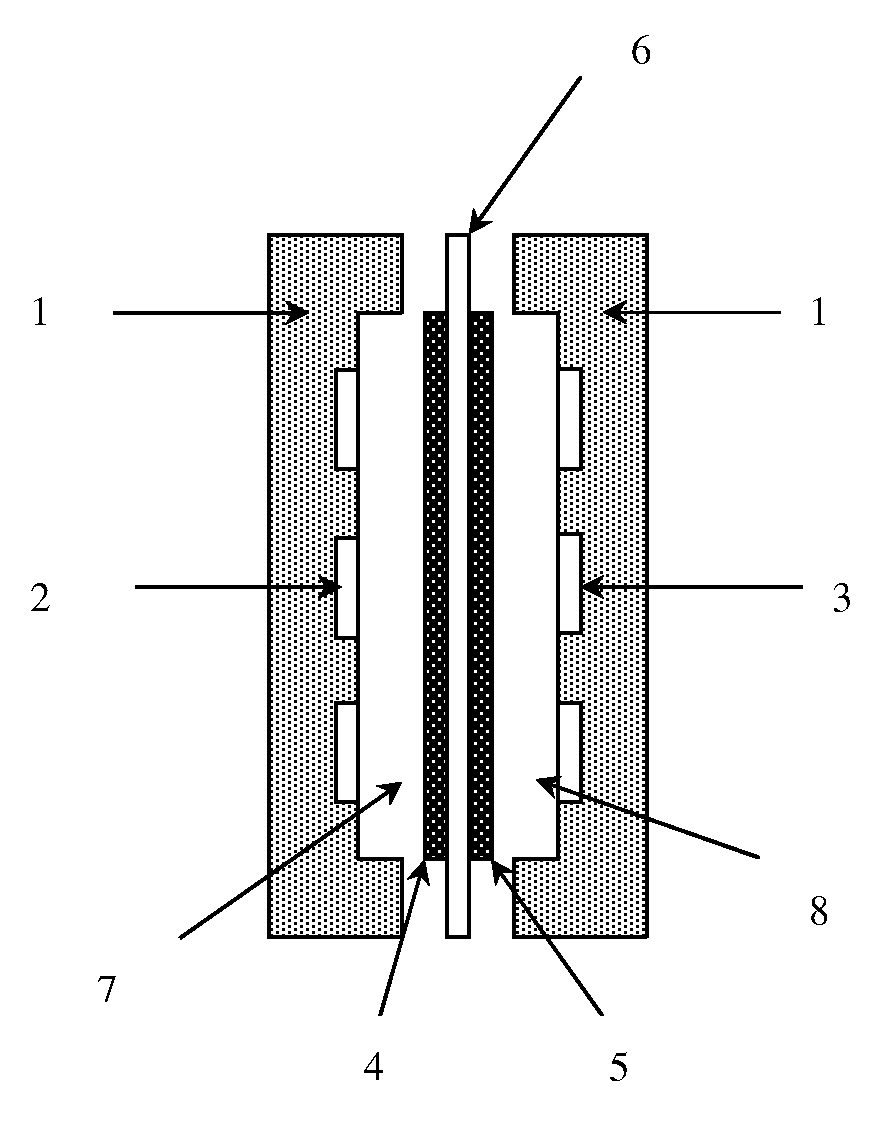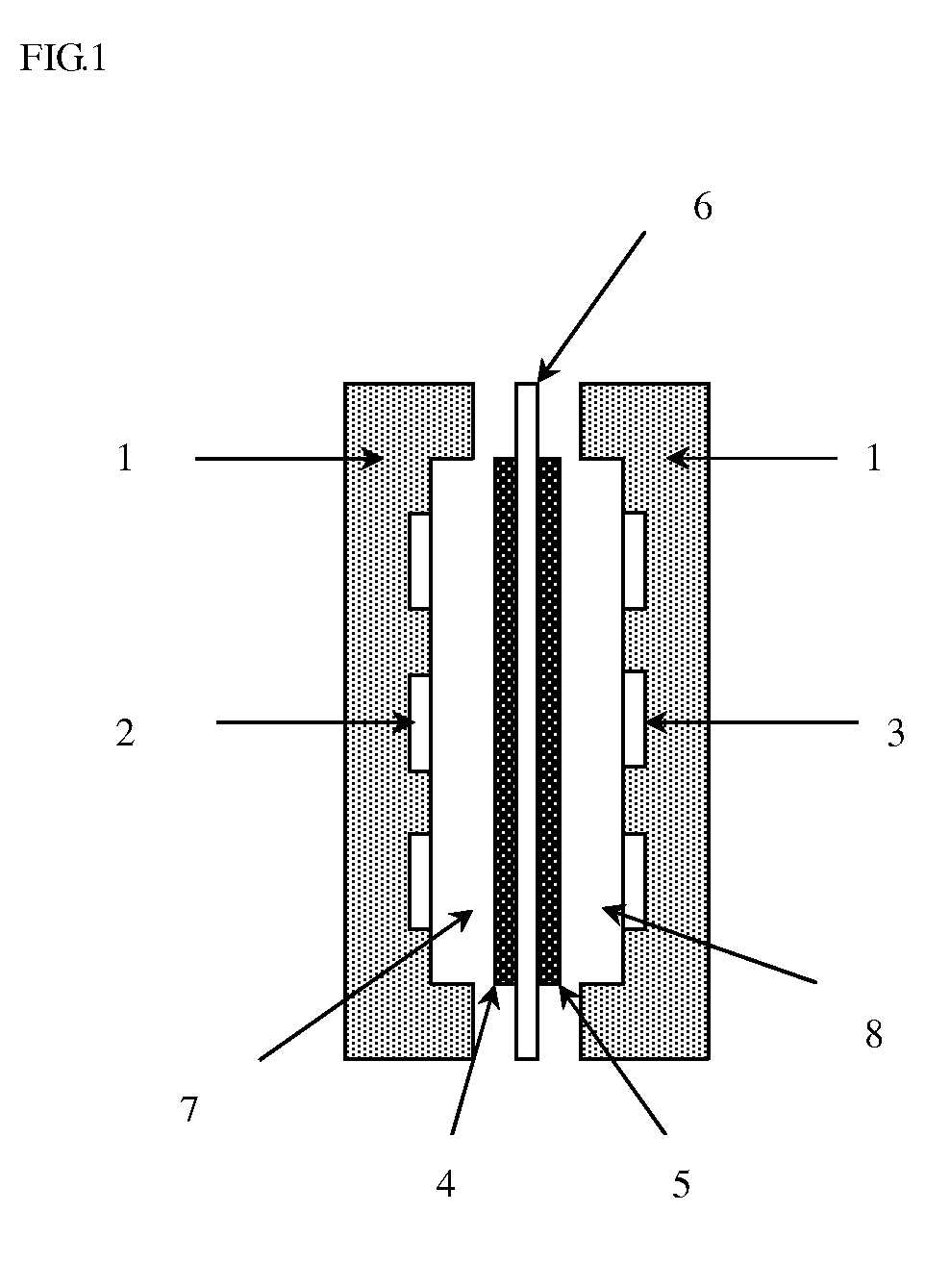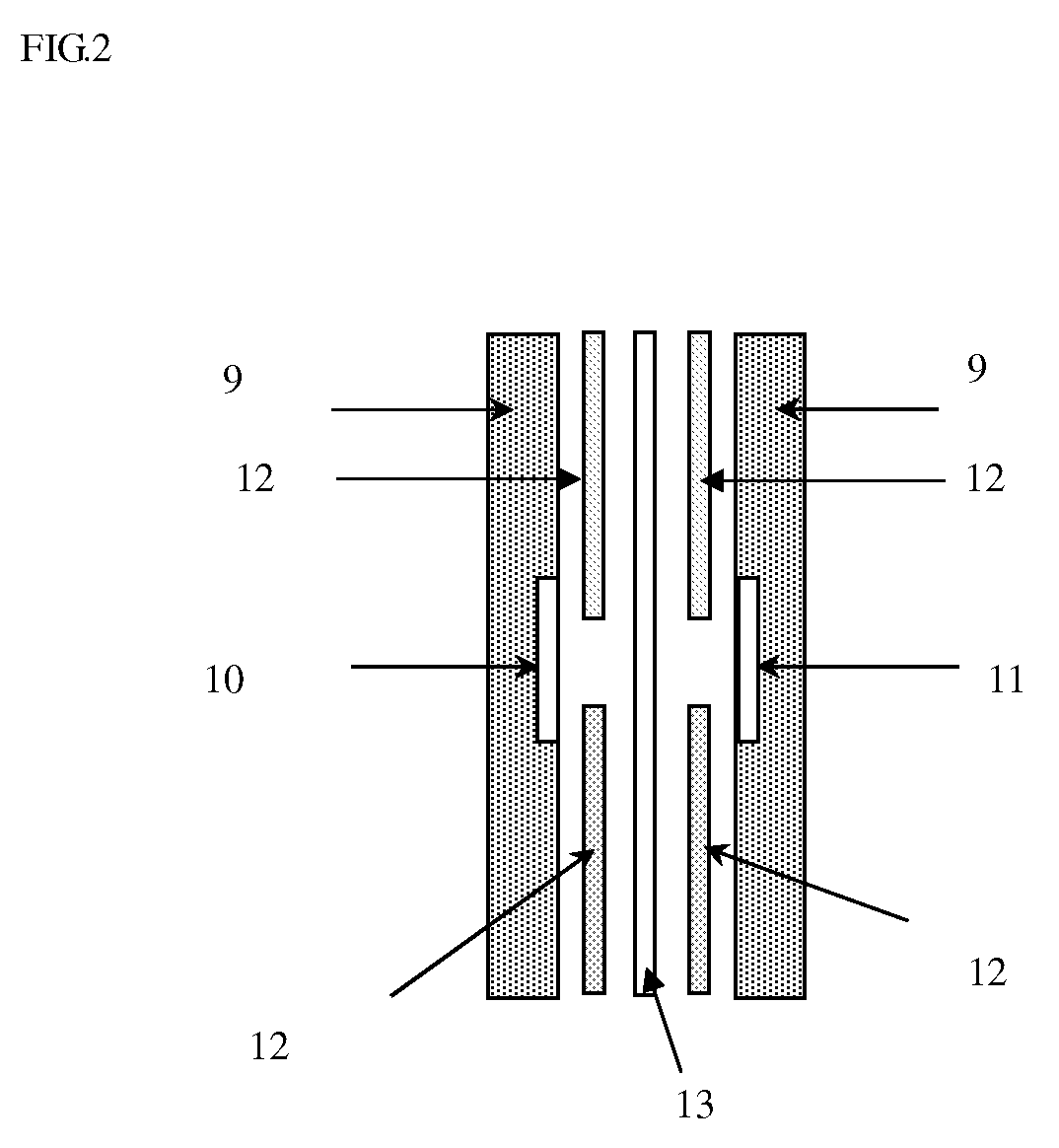Separation membrane for direct liquid fuel type fuel cell & production method thereof
a technology of separation membrane and fuel cell, which is applied in the direction of cell components, final product manufacturing, sustainable manufacturing/processing, etc., can solve the problems of difficult to obtain acceptablely difficult to obtain high fuel cell output, and inferior density of separation membrane, so as to improve the activity of electrode catalyst, improve the activity of heat resistance, and generate power stably
- Summary
- Abstract
- Description
- Claims
- Application Information
AI Technical Summary
Benefits of technology
Problems solved by technology
Method used
Image
Examples
example
[0119]Hereinafter, examples are taken to describe the present invention further in detail, but the present invention is not limited to these examples.
[0120]Note that each measurement method of various properties used for property evaluation of a fuel cell membrane in Examples and Comparative Examples, such as anion exchange capacity, moisture content, film resistance, durability of an anion-exchange group, methanol permeability and fuel cell output voltage, will be explained below.
[0121]1) Anion Exchange Capacity and Moisture Content
[0122]The anion-exchange membrane was dipped into 0.5 mol·L−1-NaCl aqueous solution for 10 hours or more to change it into a chloride ion type, followed by changing it further into a nitrate ion type with 0.2 mol·L−1-NaNO3 aqueous solution to generate a free chloride ion. The free chloride ion was titrated with silver nitrate aqueous solution by potentiometric titrator (COMTITE-900 by Hiranuma Sangyo Co., Ltd.) (A mol). Next, the same ion exchange membra...
examples 1 to 7
[0148]According to the composition shown in Table 1, respective kinds of monomers, etc. were mixed to obtain a polymerizable composition. 400 g of the obtained polymerizable composition was placed in a 500-ml glass container, and porous film shown in Table 1 was cut into a sample of 20 cm×20 cm to dip into the above polymerizable composition in the container.
[0149]Then, the porous film was taken out of the polymerizable composition, and both sides of the porous film were covered with 100-μm polyester films as separating material, followed by heating to polymerize under a pressure by 0.3 MPa nitrogen at the temperature shown in Table 1 for 5 hours.
[0150]The obtained membrane-shaped material was dipped into aqueous solution containing 6 weight % of trimethyl amine and 25 weight % of acetone at room temperature for 16 hours, and then suspended in large excess of 0.5 mol·L−1-NaOH aqueous solution for ion exchange of its counterion from bromide ion to hydroxide ion, followed by washing i...
PUM
| Property | Measurement | Unit |
|---|---|---|
| weight | aaaaa | aaaaa |
| resistance | aaaaa | aaaaa |
| AC impedance method | aaaaa | aaaaa |
Abstract
Description
Claims
Application Information
 Login to View More
Login to View More - R&D
- Intellectual Property
- Life Sciences
- Materials
- Tech Scout
- Unparalleled Data Quality
- Higher Quality Content
- 60% Fewer Hallucinations
Browse by: Latest US Patents, China's latest patents, Technical Efficacy Thesaurus, Application Domain, Technology Topic, Popular Technical Reports.
© 2025 PatSnap. All rights reserved.Legal|Privacy policy|Modern Slavery Act Transparency Statement|Sitemap|About US| Contact US: help@patsnap.com



